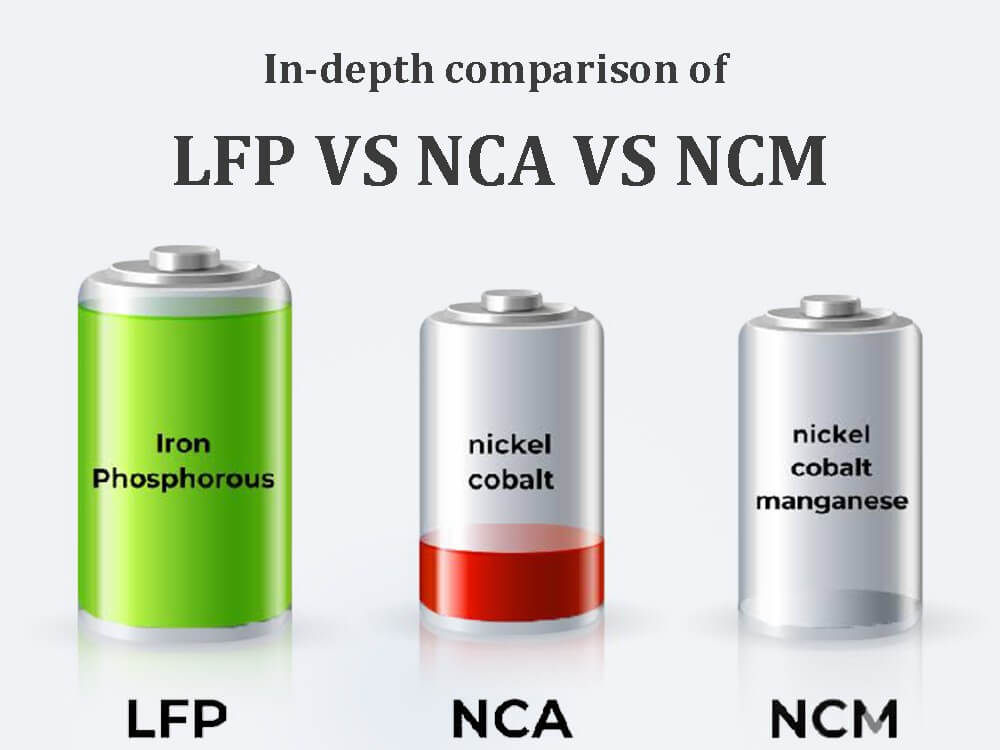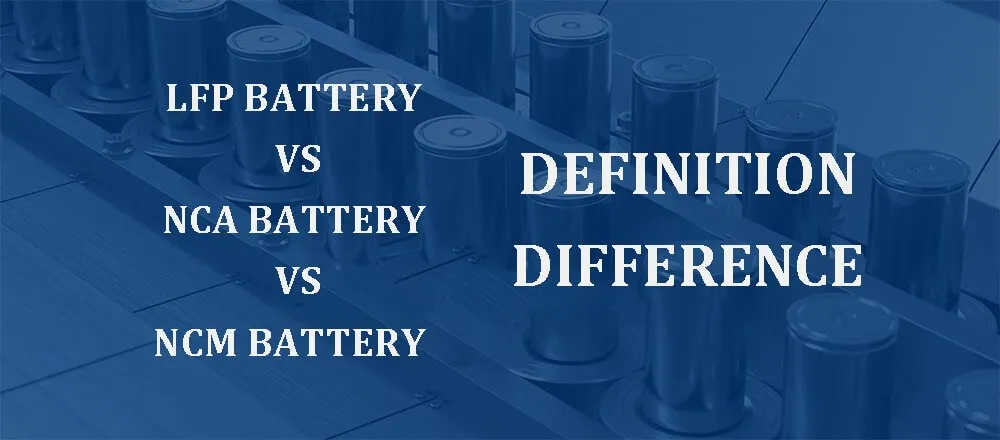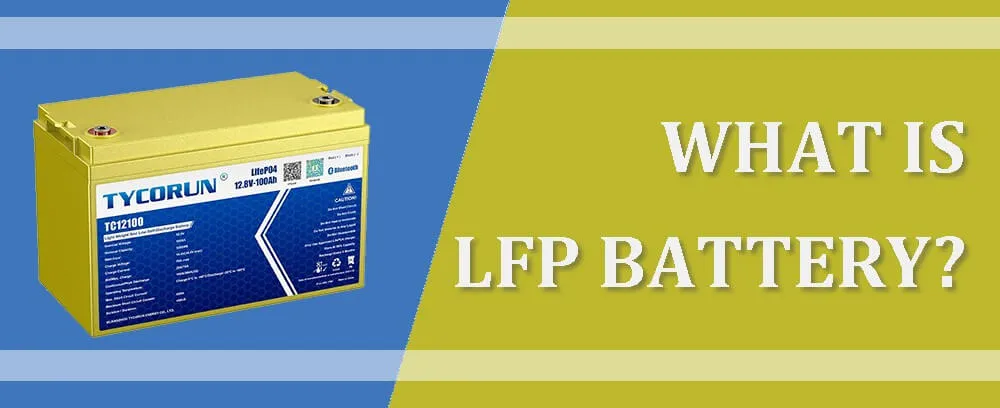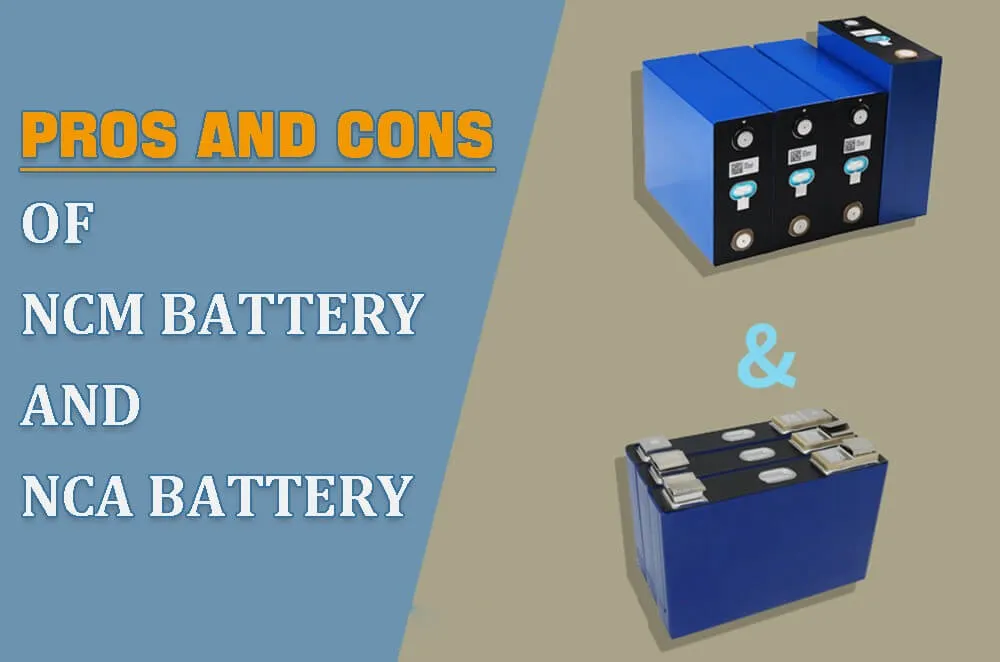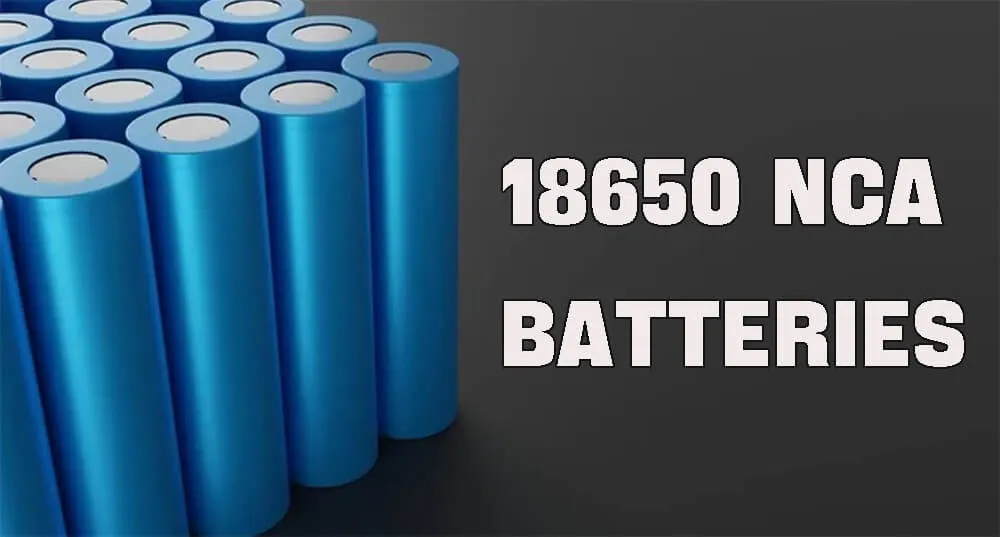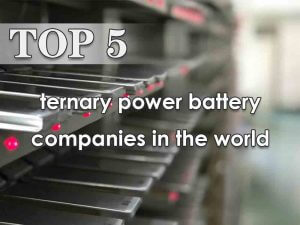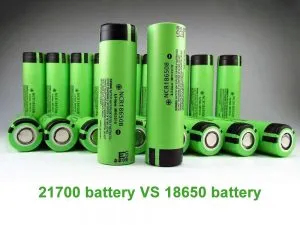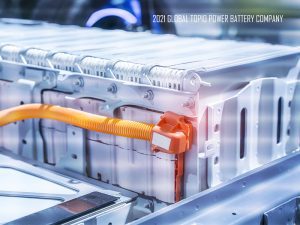In-depth comparison of lfp vs nca vs ncm battery

LFP vs NCA vs NCM battery definition difference
NCM battery
Nickel-cobalt-manganese ternary battery, referred to as NCM, is taken from the abbreviation of the three main constituent metal elements, and according to different content ratios. There are different numbers, the most famous being NCM523 and NCM811, depending on the nickel content.
Although it is called a lithium battery, the main electrolyte is a lithium compound. But compared lfp vs nmc battery, the strength of charge and discharge effect of ternary battery, and the level of energy density, depend on the content of nickel in its composition.
Compared with lfp vs nca vs ncm battery, the energy density of ternary lithium battery is quite high and excellent, and the charging and discharging effect is also good. However, due to the high content of nickel, there are also disadvantages, because the electrolyte structure of the ternary lithium battery is easy to induce side reactions to disintegrate in a high temperature environment, that is, it is not resistant to high temperature and has poor thermal stability.
On the other hand, comparing lfp vs nca battery, the scarcity of cobalt is also a factor limiting ternary lithium batteries. Cobalt is highly scarce throughout East Asia and can only be imported from South Africa, which is very expensive, so even if the nickel content is high, the thermal stability decreases.
NCA battery
Nickel-cobalt-aluminum ternary battery, referred to as NCA, is also taken from the three abbreviations of its main element composition, of which the ratio of the three elements is 8:1.5:0.5. Its energy density reaches the peak of 350Wh/kg required by the current national standard, the charging and discharging effect is also first-class, and the long-term endurance is stronger than that of NCM811.
Comparing the capacitance, energy density and safety performance of ternary batteries with different nickel contents, the higher the nickel content, the higher the relative instability. Compared with lfp vs nca vs ncm battery, NCM has all the shortcomings of various types of batteries, NCA also has, and there is a serious defect of the deflation bulge.
Compared with lfp vs nca battery, the aluminum contained in NCA battery is an acid-base amphoteric metal, and the electrochemical reaction environment is slightly unbalanced, which will cause the side reaction to release a large amount of gas. This results in a bulge of the battery, adding more danger on top of insufficient thermal stability.
LFP battery
Lithium iron phosphate battery, referred to as LFP, compared lfp vs nca vs ncm, lfp battery is characterized by low energy density, only 200Wh/kg, and is not resistant to cold environment. When the outside temperature is lower than minus 10-20°C, the energy density of the LFP battery will be proportionally attenuated, resulting in a decrease in battery life.
In addition, compared lfp vs nca vs ncm, lfp battery has high temperature resistance, stable internal structure, and strong battery shape safety. Even when it reaches its peak temperature resistance (700-800°C above zero), it will not explode like a ternary battery. Instead, it starts to smoke, and the possibility of fire and explosion is extremely low, because no gas is generated inside to increase the pressure.
The upper limit of the system energy density of the LFP battery is 200wh/kg, and the upper limit of the system energy density of the ternary lithium battery (NCM/NCA) is 350wh/kg. Compared with lfp vs nca vs ncm, the energy density of lfp battery is far less than that of ternary lithium battery.
Therefore, in the past few years, NCM batteries and NCA batteries have continued to be sought after by the market. In the early days, compared lfp vs nca, the energy density of the NCA battery used by Tesla was more than twice that of the BYD LFP battery.
Pros and cons of NCM and NCA battery
The most common ternary lithium battery in China is NCM battery. NCM battery has lower technical requirements and lower cost than NCA battery. NCA batteries, the patented technology is basically in the hands of Japan and South Korea. The advantages of high-nickel batteries are obvious, reducing cost (less cobalt) while increasing battery energy density (more nickel). Nevertheless, compared lfp vs nca vs ncm battery, but the disadvantages are also prominent.
There is less cobalt and more nickel, resulting in poor stability of the layered structure. The electrolyte is easily decomposed, and side reactions occur between the electrolyte and the surface of the material, and the substances produced by the reaction lead to poor interface conductivity.
The high-nickel, low-cobalt and low-manganese solution improves the energy density (increased battery life) with a low-cost solution, in exchange for cycle life, safety, and reduced thermal stability. In the NCA production process, aluminum is an amphoteric metal and is not easy to precipitate.
Correspondingly, the tightness of the production equipment is required to be high, the temperature and humidity requirements are stricter than NCM batteries, and the humidity requirements are controlled below 10%, which increases the technical requirements and production costs accordingly.
There are serious side reactions in the charging and discharging process of NCA batteries, which will generate gas, which will cause the battery to bulge and deform, and cause safety hazards. NCA batteries generally use cylindrical battery shells that are resistant to internal pressure.
The disadvantages of high-nickel NCM batteries, high-nickel NCA batteries also exist, that is, while increasing the energy density, the thermal stability of NCA batteries will also decrease. For this reason, starting from 2021, China’s power battery production has completely turned in a different direction. Compared lfp vs nca vs ncm, the short-life lithium iron phosphate has greatly exceeded the long-life ternary lithium battery.
LFP vs NCA vs NCM comparison – which is better
Judging from the current choices in the Chinese market, compared lfp vs nca vs ncm battery, lithium iron phosphate batteries with weak energy density have become the first choice for Chinese car companies. From January to April 2022, the loading of lithium iron phosphate far exceeds that of ternary lithium batteries. The loading volume of lithium iron phosphate batteries in April 2022 is more than double that of ternary lithium batteries.
Compared with lfp vs nca vs ncm, the thermal stability of the ternary battery is poor, the lfp battery has strong stability and long cycle life, so car companies use the lfp battery solution. The olivine structure of lfp is extremely thermally stable, and the P-O bond is firm and difficult to decompose. Even at high temperature or overcharge, the structure will not collapse like a ternary lithium battery.
Generally speaking, the lfp cathode will decompose when it reaches above 700-800 degrees Celsius, and it will produce a decomposition reaction without releasing a large amount of oxygen, so even in an ultra-high temperature environment, the lfp battery will not burn violently. LFP batteries have strong thermal stability and lower requirements for BMS. Although BMS management is relatively extensive, due to passive protection measures such as flame retardant and loss reduction, it can also ensure the safe use of lfp batteries during the long lifespan.
Compared lfp vs nca vs ncm, for NCA and NCM, the performance of NCA battery is better, but because of the lower thermal runaway temperature, it requires higher manufacturing process. NCM batteries have a higher thermal runaway temperature, which can reduce the production process requirements, so it has become the main research and development direction of Chinese battery companies, but it is not as good as NCA in terms of energy storage density.
Tesla uses NCA lithium battery, compared lfp vs nca battery, which has relatively mature technology, high power and high energy density. The research report shows that the energy density of Tesla’s battery is about twice that of BYD’s lfp battery. Compared lfp vs nca battery, NCA battery can be said to be an ideal power battery.
Tesla ultimately opted for 18650 NCA batteries. On the one hand, 18650 batteries have higher energy density and better stability and consistency. On the other hand, 18650 can effectively reduce the cost of the battery system. In addition, although the size of each battery cell is small, the energy of each cell can be controlled within a small range. Even if a cell in the battery pack fails, the impact of the failure can be reduced.
Conclusion
Compared with lfp vs nca vs ncm, NCA is the latest and best performing ternary cathode material. NCM and other ternary materials, as power battery cathode materials, will gradually become the winners of lithium-ion battery cathode materials with strong market competitiveness in terms of cost performance, capacity, and high rate characteristics, and will replace the main cathode materials for other batteries currently on the market.

